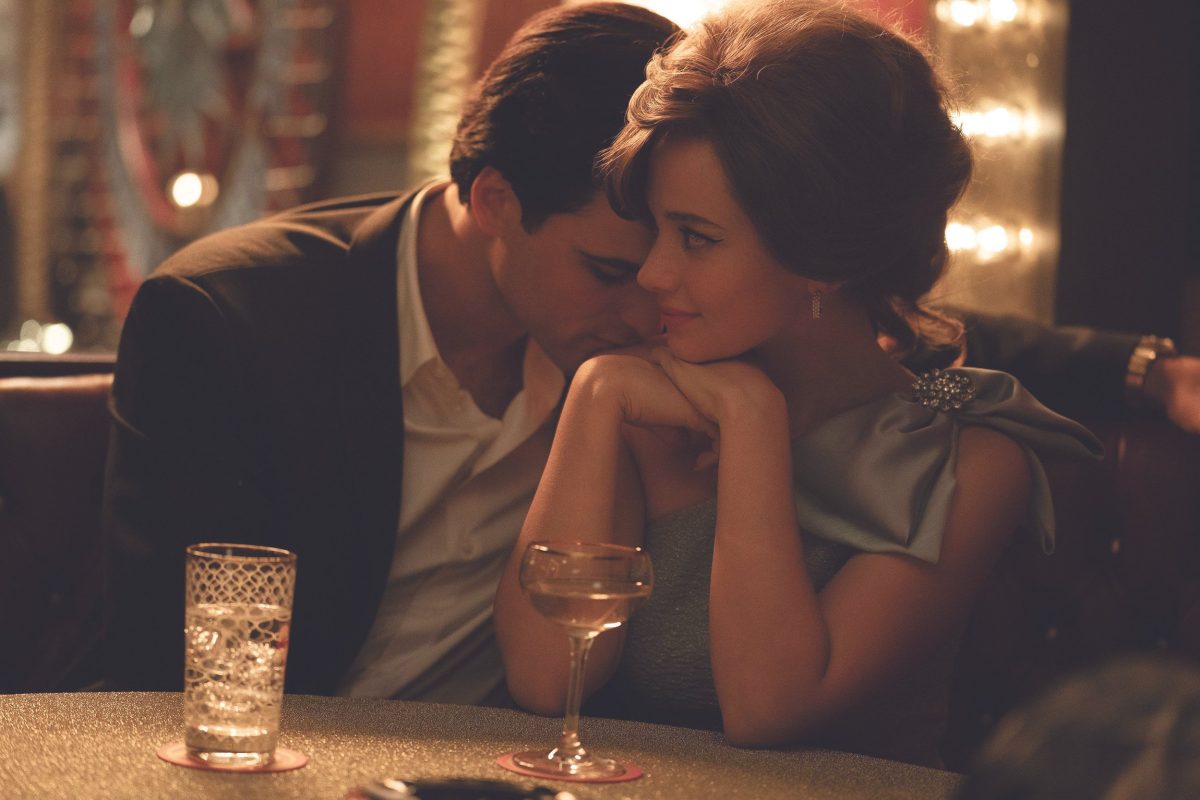In 2022, Elvis Presley reentered cultural consciousness through the flamboyant eyes of Baz Luhrmann. Austin Butler’s portrayal – and the exuberant stylistic elements of the film – depicted the well-known and beloved Elvis. Sofia Coppola’s new film “Priscilla” demands her audience of something greater: nuance. She demands the King of Rock to be seen through the eyes of his ex-wife, Priscilla Presley. Represented in this movie is a far-more nuanced and loveable icon because he is understood through the woman who loves him. What’s more, Coppola is able to acutely delineate how it is that a woman can lose herself in love and crafts a sophisticated story that honors the lived experiences of women.
Priscilla, tenderly played by Cailee Spaeny, embarks on a physical metamorphosis to become the ideal woman for Elvis.
Like her husband, Priscilla takes on a larger-than-life persona: thicker, darker hair; overdrawn eye makeup; pageantry and showmanship. In this transformation, she forsakes not just her preferred clothing choices and aesthetics, but herself entirely. This leads her to become beholden to Graceland, a woman wholly consumed by her persona. These seemingly insignificant sacrifices act as stepping stones for her journey into the dark world that soon becomes her life. In other words, the film depicts a Dante-like descent into, through and out of “Priscilla.” Priscilla is not a woman, or even a person, but an object of affection and service indebted to her husband. In illustrating Priscilla this way, Coppola is able to resonate deeper sentiments about the costs of womanhood.
Ironically, the film exhibits Priscilla’s emotional turmoil through music. The score, which is highly intentional and subversive, serves to inform the audience of Priscilla’s inner feelings and the ultimate direction of her journey. Music supervisor Randall Poster departs from the traditional original score and opts for musical vignettes complemented with modern electronic tracks, characteristic of Coppola’s style. These musical choices create the atmospheres that surround the critical moments of the film, evoking pathos, joy, oppression and other emotional states effortlessly.
Through the minimalistic camerawork, Coppola exacerbates the isolation of this woman alone in a man’s world – the frames in Graceland often are replete with the boisterous Memphis Mafia while an isolated Priscilla dwindles by the wayside. Furthermore, the camerawork avoids attributing blame for problems such as addiction. For example, one scene in Las Vegas shows a hand offering a white pill, but it never reveals whose hand is extending it. These exonerations are an extension of the perspective through which the story is understood. The film seeks to show the reality of a past and person without judgement or justifications. “Priscilla” allows the breadth and space for the observation of truth divorced from an assessment of that truth, staying true to the beauty of a memoiric portrayal.
The poignancy of Coppola’s “Priscilla” lies in its simplicity. Ultimately, it is the delineation of a woman who fell and lost herself in love that reimagines an idol not sensationally, but intimately. The film stands as a powerful testament to the importance of honoring yourself, self discovery and liberation, understood through the pains of womanhood. For these reasons, “Priscilla” is nothing short of an understated masterpiece.







